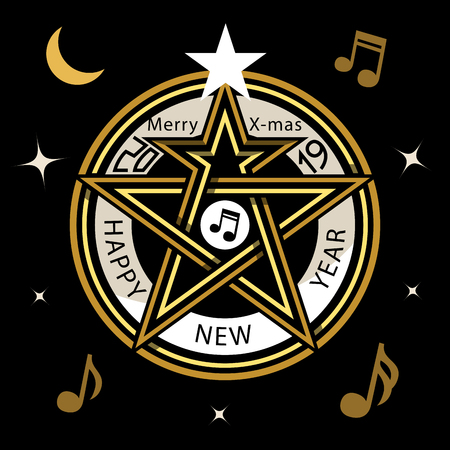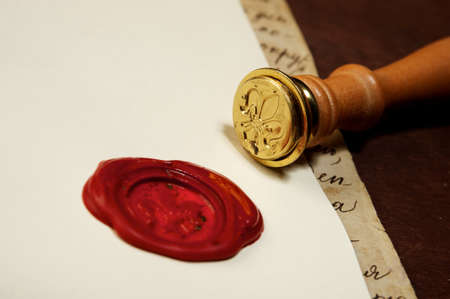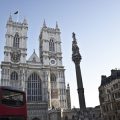1. Introduction: Setting the Tone for Tarot’s Mystique
Tarot has long occupied a unique and enigmatic position within the tapestry of European culture, its allure often hovering between fascination and scepticism. In Britain, especially, Tarot’s reputation is coloured by a blend of historical intrigue, social curiosity, and a healthy dose of British reserve. From candle-lit Victorian parlours to modern-day gatherings in London’s cafés, Tarot cards have sparked debate and wonder alike. While some dismiss the cards as mere fortune-telling parlour tricks, others are drawn to their evocative imagery and mysterious symbolism. This dichotomy forms the bedrock of Tarot’s enduring mystique in British society—a culture renowned for both its empirical rigour and appetite for the arcane. As we embark on an exploration of Tarot’s myths, legends, and realities, it is essential to acknowledge the layered perspectives that have shaped its place in the collective imagination of Britain. Whether approached with scholarly interest or playful curiosity, Tarot continues to cast a spell over those who encounter it, inviting us all to ponder what truly lies beneath its centuries-old veil.
2. Origins and Early Legends
The beginnings of Tarot are shrouded in both documented history and a fair dose of conjecture. Many enthusiasts and scholars alike have traced the roots of Tarot to 15th-century Italy, where ornate decks were crafted for the aristocracy—likely as a game rather than a mystical tool. However, some theories point even further back, suggesting links to the Mamluk playing cards brought into Europe through trade routes. These early decks bore striking similarities to modern suits and structure.
Theories of Tarot’s Arrival
| Origin Theory | Description |
|---|---|
| Medieval Italy | First documented use as “carte da trionfi” or triumph cards, associated with Italian nobility and festivities. |
| Mamluk Egypt | Introduction of playing cards into Europe via Islamic culture, influencing card design and suit symbols. |
| Ancient Mystical Roots | Popular legend claims origins in Ancient Egypt or Atlantis, though no historical evidence supports this. |
Myths Surrounding Tarot’s Arrival in Britain
The journey of Tarot to British shores is particularly clouded by myth. Some stories claim secret societies smuggled the cards into England as occult tools during the Victorian fascination with all things esoteric. Others insist that Romani travellers brought Tarot with them, lending an air of exotic mystery. In truth, there is scant documentation until the late 18th and early 19th centuries when Tarot became entwined with British occult revival movements.
A Note on British Perceptions
The British public’s initial reception was tinged with suspicion; playing cards themselves had been subject to moral scrutiny, let alone those associated with divination. Nevertheless, by the time Tarot gained popularity amongst the upper classes and intellectual circles, it had already acquired an intriguing reputation—a blend of imported novelty and homegrown folklore.

3. Tarot and British Occultism
The intertwining of Tarot and British occultism is a fascinating chapter in the broader history of Western esotericism. In the late nineteenth and early twentieth centuries, Britain emerged as a crucible for occult thought, with the Tarot deck at the centre of many intellectual and spiritual explorations.
The Hermetic Order of the Golden Dawn
No discussion on the subject can bypass the profound influence of the Hermetic Order of the Golden Dawn. Founded in London in 1888 by William Wynn Westcott, Samuel Liddell MacGregor Mathers, and William Robert Woodman, this secret society drew upon an eclectic mix of alchemical, Kabbalistic, and Rosicrucian traditions. The Golden Dawn’s members were instrumental in integrating the Tarot into a structured system of magical practice. Far from being merely a tool for fortune-telling, Tarot cards became vehicles for meditative work, self-development, and ritual magic within their teachings.
Key British Figures and Their Contributions
Several luminaries associated with the Golden Dawn left indelible marks on Tarot’s history. Arthur Edward Waite, an English mystic and scholar, collaborated with artist Pamela Colman Smith to produce what would become the world-renowned Rider-Waite-Smith Tarot deck in 1909. This deck revolutionised Tarot symbolism, making it more accessible and visually intuitive than earlier decks. Aleister Crowley, another pivotal figure who passed through the ranks of the Golden Dawn, later developed the Thoth Tarot deck with Lady Frieda Harris—further embedding British sensibilities and esoteric philosophies into modern Tarot practice.
Tarot’s Role in Shaping British Occult Study
Within British occult circles, the Tarot was not only a tool for divination but also a symbolic map for personal transformation and mystical insight. The structure of the Major and Minor Arcana was linked to astrological correspondences, alchemical processes, and even psychological archetypes—long before Jungian ideas entered popular consciousness. The focus shifted from mere prediction to introspection and spiritual growth, laying foundations that still influence contemporary Tarot study across the UK today.
Thus, in Britain’s rich tapestry of occult tradition, Tarot stands as both artefact and living practice—shaped by visionaries who saw beyond myth to its deeper realities.
4. Pop Culture, Folklore, and Misconceptions
The Tarot holds a unique position in British culture, straddling the realms of folklore, popular media, and everyday superstition. While its roots may lie on the continent, the British Isles have developed their own narratives and perceptions surrounding these enigmatic cards. In literature and television—from Shakespearean references to modern dramas like “Doctor Who”—Tarot is often portrayed as a mystical tool wielded by fortune-tellers, witches, or eccentric characters. These depictions, while captivating, frequently blur the lines between historical reality and creative embellishment.
British Folklore and Tarot
Tarot’s place in British folklore is complex. While not originally native to Britain, stories and local legends have woven Tarot into tales of Romani travellers, Victorian parlours, and mysterious countryside fairs. The cards are sometimes conflated with other forms of divination such as tea leaf reading or palmistry. Yet, despite their foreign origins, Tarot cards have become a symbol in British storytelling for fate, destiny, and the unknown.
Modern Media Representations
Contemporary British media tends to amplify Tarot’s aura of mystery. Films and series often use Tarot spreads as dramatic plot devices or harbingers of doom. This has led to widespread beliefs about the cards’ supernatural powers or inherent danger—misunderstandings that persist even in today’s more sceptical society.
Common Misconceptions About Tarot
| Misconception | Reality |
|---|---|
| Tarot predicts unavoidable fate | Tarot is a tool for reflection; outcomes are not set in stone |
| Only “gifted” people can read Tarot | Anyone can learn with practice; intuition helps but is not exclusive |
| The cards themselves are magical objects | The power lies in interpretation, not in the physical cards |
Cultural Impact and Lasting Myths
The ongoing fascination with Tarot in Britain is fuelled by both its representation in mass media and its adoption into local folklore traditions. While much of what is believed about Tarot is based on myth rather than fact, this blend of history, fiction, and misconception continues to shape public perception—sometimes obscuring its original purpose as a tool for self-exploration rather than prophecy.
5. The Reality Behind the Cards
The allure of Tarot is often shrouded in romanticised tales and speculative origins, yet it is essential to ground our understanding in what can be factually verified. Contrary to popular belief, there is no credible historical evidence linking Tarot cards to ancient Egyptian mysteries, lost Atlantean wisdom, or secret societies predating the Renaissance. Instead, what we do know—supported by academic research and surviving artefacts—is that Tarot emerged in mid-15th century Italy as a card game known as “trionfi” or triumphs. These early decks were lavishly illustrated and intended for entertainment among the nobility, not for divination or esoteric purposes.
Over time, Tarot’s function evolved. By the late 18th century, French occultists began reimagining the cards as tools of mystical insight, assigning them symbolic meanings and connecting them to Kabbalah and astrology. This reinterpretation laid the groundwork for modern Tarot reading practices seen across Britain today. However, it is crucial to recognise that these layers of symbolism were added centuries after the cards’ invention rather than originating with them.
Despite its tangled history, Tarot holds a persistent cultural presence in British society. From Victorian parlours to contemporary high streets, Tarot adapts itself to shifting social contexts, serving both as a tool for introspection and as a symbol of alternative spirituality. Today’s British Tarot community acknowledges its composite heritage—a blend of Italian artistry, French occult philosophy, and local folklore—while also embracing the creative freedom inherent in interpretation.
In summary, separating fact from fiction enriches our appreciation of Tarot’s journey through history. While myths persist and add to its mystique, the true story of Tarot is just as fascinating: an evolving tapestry woven from continental innovation and enduring British curiosity.
6. Contemporary British Perspectives
In present-day Britain, Tarot occupies a distinctive and evolving space within the cultural landscape. Once considered the preserve of fortune tellers or eccentric mystics, Tarot has in recent years experienced a marked shift in public perception. Today, it is not uncommon to find Tarot decks on the shelves of mainstream bookshops, nestled between self-help guides and mindfulness manuals—a testament to its growing accessibility and acceptability.
There is a notable curiosity about Tarot across diverse segments of British society. For some, particularly younger generations, Tarot is approached less as a tool for divination and more as a means of introspection or creative storytelling. Workshops, pop-up readings at markets, and online forums abound, reflecting an appetite for communal exploration rather than solitary ritual. This trend dovetails with broader interests in well-being and mental health, where Tarot is sometimes used alongside journaling or meditation as a prompt for reflection.
At the same time, alternative spirituality continues to thrive in the UK’s multicultural cities and rural communities alike. Here, Tarot finds resonance among those who seek meaning outside the confines of traditional religious structures. It is common to encounter individuals who blend Tarot with practices such as astrology, reiki, or paganism—demonstrating how the cards have become part of a wider tapestry of spiritual experimentation.
British attitudes towards Tarot are also shaped by scepticism and critical inquiry—a hallmark of local culture. Media discussions often grapple with questions about authenticity and evidence, while university societies might host debates on the psychology behind card reading. These conversations reflect a pragmatic approach: even among enthusiasts, there is room for doubt and humour alongside genuine belief.
Crucially, Tarot serves as both a social connector and a marker of personal identity within British communities. Local meet-ups, online groups, and collaborative projects foster a sense of belonging for those drawn to the cards’ symbolism and history. In this context, Tarot is less about predicting an immutable fate than about fostering dialogue—both with oneself and others—rooted in shared curiosity about life’s mysteries.
7. Conclusion: The Enduring Allure of Tarot
In drawing this exploration to a close, it is clear that the historical mystique of Tarot endures, woven into the very fabric of British cultural consciousness. Tarot’s persistent allure in Britain owes much to its unique blend of myth, legend, and tangible historical threads—a synthesis that keeps the practice both enigmatic and relevant. From the candle-lit corners of Victorian parlours to contemporary gatherings in London’s eclectic cafes, Tarot continues to captivate those seeking guidance, inspiration, or simply a touch of wonder.
What makes Tarot so enchanting within a distinctly British context is not merely its foreign origins or esoteric symbolism, but how these elements have been reinterpreted through a local lens. The British penchant for folklore, literary tradition, and the eccentric lends Tarot a special resonance here—where Arthurian legends and ancient druidic rites still echo in the collective imagination. This ongoing dialogue between history and myth provides fertile ground for reinterpretation and personal meaning.
Moreover, the scepticism characteristic of British rationalism paradoxically enhances Tarot’s appeal. The cards are approached with both curiosity and a healthy dose of wit—a playful nod to the unknown rather than blind faith. This balance allows Tarot to remain relevant as both an artistic pursuit and a tool for introspection in modern Britain.
In summary, the mystery of Tarot persists because it defies easy categorisation; it is at once an art form, a mirror to our inner selves, and a repository of centuries-old stories. Its enduring charm lies in this ambiguity—ever inviting yet never fully revealed. For Britons past and present, Tarot offers not only glimpses into possible futures but also a living connection to the rich tapestry of history and myth that defines these isles.


